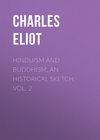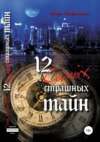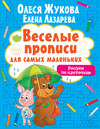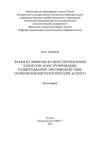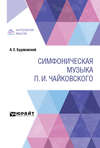Loe raamatut: «Hinduism and Buddhism, An Historical Sketch, Vol. 2»
BOOK IV
THE MAHAYANA
CHAPTER XVI
MAIN FEATURES OF THE MAHAYANA
The obscurest period in the history of Buddhism is that which follows the reign of Asoka, but the enquirer cannot grope for long in these dark ages without stumbling upon the word Mahayana. This is the name given to a movement which in its various phases may be regarded as a philosophical school, a sect and a church, and though it is not always easy to define its relationship to other schools and sects it certainly became a prominent aspe ct of Buddhism in India about the beginning of our era besides achieving enduring triumphs in the Far East. The word1 signifies Great Vehicle or Carriage, that is a means of conveyance to salvation, and is contrasted with Hinayana, the Little Vehicle, a name bestowed on the more conservative party though not willingly accepted by them. The simplest description of the two Vehicles is that given by the Chinese traveller I-Ching (635-713 A.D.) who saw them both as living realities in India. He says2 "Those who worship Bodhisattvas and read Mahayana Sutras are called Mahayanists, while those who do not do this are called Hinayanists." In other words, the Mahayanists have scriptures of their own, not included in the Hinayanist Canon and adore superhuman beings in the stage of existence immediately below Buddhahood and practically differing little from Indian deities. Many characteristics could be added to I-Ching's description but they might not prove universally true of the Mahayana nor entirely absent from the Hinayana, for however divergent the two Vehicles may have become when separated geographically, for instance in Ceylon and Japan, it is clear that when they were in contact, as in India and China, the distinction was not always sharp. But in general the Mahayana was more popular, not in the sense of being simpler, for parts of its teaching were exceedingly abstruse, but in the sense of striving to invent or include doctrines agreeable to the masses. It was less monastic than the older Buddhism, and more emotional; warmer in charity, more personal in devotion, more ornate in art, literature and ritual, more disposed to evolution and development, whereas the Hinayana was conservative and rigid, secluded in its cloisters and open to the plausible if unjust accusation of selfishness. The two sections are sometimes described as northern and southern Buddhism, but except as a rough description of their distribution at the present day, this distinction is not accurate, for the Mahayana penetrated to Java, while the Hinayana reached Central Asia and China. But it is true that the development of the Mahayana was due to influences prevalent in northern India and not equally prevalent in the South. The terms Pali and Sanskrit Buddhism are convenient and as accurate as can be expected of any nomenclature covering so large a field.
Though European writers usually talk of two Yânas or Vehicles—the great and the little—and though this is clearly the important distinction for historical purposes, yet Indian and Chinese Buddhists frequently enumerate three. These are the Śrâvakayâna, the vehicle of the ordinary Bhikshu who hopes to become an Arhat, the Pratyekabuddhayâna for the rare beings who are able to become Buddhas but do not preach the law to others, and in contrast to both of these the Mahayana or vehicle of Buddhas and Bodhisattvas. As a rule these three Vehicles are not regarded as hostile or even incompatible. Thus the Lotus sutra,3 maintains that there is really but one vehicle though by a wise concession to human weakness the Buddha lets it appear that there are three to suit divers tastes. And the Mahayana is not a single vehicle but rather a train comprising many carriages of different classes. It has an unfortunate but distinct later phase known in Sanskrit as Mantrayâna and Vajrayâna but generally described by Europeans as Tantrism. This phase took some of the worst features in Hinduism, such as spells, charms, and the worship of goddesses, and with misplaced ingenuity fitted them into Buddhism. I shall treat of it in a subsequent chapter, for it is chronologically late. The silence of Hsüan Chuang and I-Ching implies that in the seventh century it was not a noticeable aspect of Indian Buddhism.
Although the record of the Mahayana in literature and art is clear and even brilliant, it is not easy either to trace its rise or connect its development with other events in India. Its annals are an interminable list of names and doctrines, but bring before us few living personalities and hence are dull. They are like a record of the Christian Church's fight against Arians, Monophysites and Nestorians with all the great figures of Byzantine history omitted or called in question. Hence I fear that my readers (if I have any) may find these chapters repellent, a mist of hypotheses and a catalogue of ancient paradoxes. I can only urge that if the history of the Mahayana is uncertain, its teaching fanciful and its scriptures tedious, yet it has been a force of the first magnitude in the secular history and art of China, Japan and Tibet and even to-day the most metaphysical of its sacred books, the Diamond Cutter, has probably more readers than Kant and Hegel.
Since the early history of the Mahayana is a matter for argument rather than precise statement, it will perhaps be best to begin with some account of its doctrines and literature and proceed afterwards to chronology. I may, however, mention that general tradition connects it with King Kanishka and asserts that the great doctors Aśvaghosha and Nâgârjuna lived in and immediately after his reign. The attitude of Kanishka and of the Council which he summoned towards the Mahayana is far from clear and I shall say something about this difficult subject below. Unfortunately his date is not beyond dispute for while a considerable consensus of opinion fixes his accession at about 78 A.D., some scholars place it earlier and others in the second century A.D.4 Apart from this, it appears established that the Sukhâvatî-vyûha which is definitely Mahayanist was translated into Chinese between 147 and 186 A.D. We may assume that it was then already well known and had been composed some time before, so that, whatever Kanishka's date may have been, Mahayanist doctrines must have been in existence about the time of the Christian era, and perhaps considerably earlier. Naturally no one date like a reign or a council can be selected to mark the beginning of a great school. Such a body of doctrine must have existed piecemeal and unauthorized before it was collected and recognized and some tenets are older than others. Enlarging I-Ching's definition we may find in the Mahayana seven lines of thought or practice. All are not found in all sects and some are shared with the Hinayana but probably none are found fully developed outside the Mahayana. Many of them have parallels in the contemporary phases of Hinduism.
1. A belief in Bodhisattvas and in the power of human beings to become Bodhisattvas.
2. A code of altruistic ethics which teaches that everyone must do good in the interest of the whole world and make over to others any merit he may acquire by his virtues. The aim of the religious life is to become a Bodhisattva, not to become an Arhat.
3. A doctrine that Buddhas are supernatural beings, distributed through infinite space and time, and innumerable. In the language of later theology a Buddha has three bodies and still later there is a group of five Buddhas.
4. Various systems of idealist metaphysics, which tend to regard the Buddha essence or Nirvana much as Brahman is regarded in the Vedanta.
5. A canon composed in Sanskrit and apparently later than the Pali Canon.
6. Habitual worship of images and elaboration of ritual. There is a dangerous tendency to rely on formulæ and charms.
7. A special doctrine of salvation by faith in a Buddha, usually Amitâbha, and invocation of his name. Mahayanism can exist without this doctrine but it is tolerated by most sects and considered essential by some.
CHAPTER XVII
BODHISATTVAS
Let us now consider these doctrines and take first the worship of Bodhisattvas. This word means one whose essence is knowledge but is used in the technical sense of a being who is in process of obtaining but has not yet obtained Buddhahood. The Pali Canon shows little interest in the personality of Bodhisattvas and regards them simply as the preliminary or larval form of a Buddha, either Śâkyamuni5 or some of his predecessors. It was incredible that a being so superior to ordinary humanity as a Buddha should be suddenly produced in a human family nor could he be regarded as an incarnation in the strict sense. But it was both logical and edifying to suppose that he was the product of a long evolution of virtue, of good deeds and noble resolutions extending through countless ages and culminating in a being superior to the Devas. Such a being awaited in the Tushita heaven the time fixed for his appearance on earth as a Buddha and his birth was accompanied by marvels. But though the Pali Canon thus recognizes the Bodhisattva as a type which, if rare, yet makes its appearance at certain intervals, it leaves the matter there. It is not suggested that saints should try to become Bodhisattvas and Buddhas, or that Bodhisattvas can be helpers of mankind.6 But both these trains of thought are natural developments of the older ideas and soon made themselves prominent. It is a characteristic doctrine of Mahayanism that men can try and should try to become Bodhisattvas.
In the Pali Canon we hear of Arhats, Pacceka Buddhas, and perfect Buddhas. For all three the ultimate goal is the same, namely Nirvana, but a Pacceka Buddha is greater than an Arhat, because he has greater intellectual powers though he is not omniscient, and a perfect Buddha is greater still, partly because he is omniscient and partly because he saves others. But if we admit that the career of the Buddha is better and nobler, and also that it is, as the Introduction to the Jâtaka recounts, simply the result of an earnest resolution to school himself and help others, kept firmly through the long chain of existences, there is nothing illogical or presumptuous in making our goal not the quest of personal salvation, but the attainment of Bodhisattvaship, that is the state of those who may aspire to become Buddhas. In fact the Arhat, engrossed in his own salvation, is excused only by his humility and is open to the charge of selfish desire, since the passion for Nirvana is an ambition like any other and the quest for salvation can be best followed by devoting oneself entirely to others. But though my object here is to render intelligible the Mahayanist point of view including its objections to Hinayanism, I must defend the latter from the accusation of selfishness. The vigorous and authoritative character of Gotama led him to regard all mankind as patients requiring treatment and to emphasize the truth that they could cure themselves if they would try. But the Buddhism of the Pali Canon does not ignore the duties of loving and instructing others;7 it merely insists on man's power to save himself if properly instructed and bids him do it at once: "sell all that thou hast and follow me." And the Mahayana, if less self-centred, has also less self-reliance, and self-discipline. It is more human and charitable, but also more easygoing: it teaches the believer to lean on external supports which if well chosen may be a help, but if trusted without discrimination become paralyzing abuses. And if we look at the abuses of both systems the fossilized monk of the Hinayana will compare favourably with the tantric adept. It was to the corruptions of the Mahayana rather than of the Hinayana that the decay of Buddhism in India was due.
The career of the Bodhisattva was early divided into stages (bhûmi) each marked by the acquisition of some virtue in his triumphant course. The stages are variously reckoned as five, seven and ten. The Mahâvastu,8 which is the earliest work where the progress is described, enumerates ten without distinguishing them very clearly. Later writers commonly look at the Bodhisattva's task from the humbler point of view of the beginner who wishes to learn the initiatory stages. For them the Bodhisattva is primarily not a supernatural being or even a saint but simply a religious person who wishes to perform the duties and enjoy the privileges of the Church to the full, much like a communicant in the language of contemporary Christianity. We have a manual for those who would follow this path, in the Bodhicaryâvatâra of Śântideva, which in its humility, sweetness and fervent piety has been rightly compared with the De Imitatione Christi. In many respects the virtues of the Bodhisattva are those of the Arhat. His will must be strenuous and concentrated; he must cultivate the strictest morality, patience, energy, meditation and knowledge. But he is also a devotee, a bhakta: he adores all the Buddhas of the past, present and future as well as sundry superhuman Bodhisattvas, and he confesses his sins, not after the fashion of the Pâtimokkha, but by accusing himself before these heavenly Protectors and vowing to sin no more.
Śântideva lived in the seventh century9 but tells us that he follows the scriptures and has nothing new to say. This seems to be true for, though his book being a manual of devotion presents its subject-matter in a dogmatic form, its main ideas are stated and even elaborated in the Lotus. Not only are eminent figures in the Church, such as Sâriputra and Ânanda, there designated as future Buddhas, but the same dignity is predicted wholesale for five hundred and again for two thousand monks while in Chapter x is sketched the course to be followed by "young men or young ladies of good family" who wish to become Bodhisattvas.10 The chief difference is that the Bodhicaryâvatâra portrays a more spiritual life, it speaks more of devotion, less of the million shapes that compose the heavenly host: more of love and wisdom, less of the merits of reading particular sûtras. While rendering to it and the faith that produced it all honour, we must remember that it is typical of the Mahayana only in the sense that the De Imitatione Christi is typical of Roman Catholicism, for both faiths have other sides.
Śântideva's Bodhisattva, when conceiving the thought of Bodhi or eventual supreme enlightenment to be obtained, it may be, only after numberless births, feels first a sympathetic joy in the good actions of all living beings. He addresses to the Buddhas a prayer which is not a mere act of commemoration, but a request to preach the law and to defer their entrance into Nirvana. He then makes over to others whatever merit he may possess or acquire and offers himself and all his possessions, moral and material, as a sacrifice for the salvation of all beings. This on the one hand does not much exceed the limits of dânam or the virtue of giving as practised by Śâkyamuni in previous births according to the Pali scriptures, but on the other it contains in embryo the doctrine of vicarious merit and salvation through a saviour. The older tradition admits that the future Buddha (e.g. in the Vessantara birth-story) gives all that is asked from him including life, wife and children. To consider the surrender and transfer of merit (pattidâna in Pali) as parallel is a natural though perhaps false analogy. But the transfer of Karma is not altogether foreign to Brahmanic thought, for it is held that a wife may share in her husband's Karma nor is it wholly unknown to Sinhalese Buddhism.11 After thus deliberately rejecting all personal success and selfish aims, the neophyte makes a vow (praṇidhâna) to acquire enlightenment for the good of all beings and not to swerve from the rules of life and faith requisite for this end. He is then a "son of Buddha," a phrase which is merely a natural metaphor for saying that he is one of the household of faith12 but still paves the way to later ideas which make the celestial Bodhisattva an emanation or spiritual son of a celestial Buddha.
Asanga gives13 a more technical and scholastic description of the ten bhûmis or stages which mark the Bodhisattva's progress towards complete enlightenment and culminate in a phase bearing the remarkable but ancient name of Dharmamegha known also to the Yoga philosophy. The other stages are called: muditâ (joyful): vimalâ (immaculate): prabhâkarî (light giving): arcismatî (radiant): durjaya (hard to gain): abhimukhî (facing, because it faces both transmigration and Nirvana): dûramgamâ (far-going): acalâ (immovable): sâdhumatî (good minded).
The incarnate Buddhas and Bodhisattvas of Tibet are a travesty of the Mahayana which on Indian soil adhered to the sound doctrine that saints are known by their achievements as men and cannot be selected among infant prodigies.14 It was the general though not universal opinion that one who had entered on the career of a Bodhisattva could not fall so low as to be reborn in any state of punishment, but the spirit of humility and self-effacement which has always marked the Buddhist ideal tended to represent his triumph as incalculably distant. Meanwhile, although in the whirl of births he was on the upward grade, he yet had his ups and downs and there is no evidence that Indian or Far Eastern Buddhists arrogated to themselves special claims and powers on the ground that they were well advanced in the career of Buddhahood. The vow to suppress self and follow the light not only in this life but in all future births contains an element of faith or fantasy, but has any religion formed a nobler or even equivalent picture of the soul's destiny or built a better staircase from the world of men to the immeasurable spheres of the superhuman?
One aspect of the story of Sâkyamuni and his antecedent births thus led to the idea that all may become Buddhas. An equally natural development in another direction created celestial and superhuman Bodhisattvas. The Hinayana held that Gotama, before his last birth, dwelt in the Tushita heaven enjoying the power and splendour of an Indian god and it looked forward to the advent of Maitreya. But it admitted no other Bodhisattvas, a consequence apparently of the doctrine that there can only be one Buddha at a time. But the luxuriant fancy of India, which loves to multiply divinities, soon broke through this restriction and fashioned for itself beautiful images of benevolent beings who refuse the bliss of Nirvana that they may alleviate the sufferings of others.15 So far as we can judge, the figures of these Bodhisattvas took shape just about the same time that the personalities of Vishnu and Śiva were acquiring consistency. The impulse in both cases is the same, namely the desire to express in a form accessible to human prayer and sympathetic to human emotion the forces which rule the universe. But in this work of portraiture the Buddhists laid more emphasis on moral and spiritual law than did the Brahmans: they isolated in personification qualities not found isolated in nature. Śiva is the law of change, of death and rebirth, with all the riot of slaughter and priapism which it entails: Vishnu is the protector and preserver, the type of good energy warring against evil, but the unity of the figure is smothered by mythology and broken up into various incarnations. But Avalokita and Mañjuśrî, though they had not such strong roots in Indian humanity as Śiva and Vishnu, are genii of purer and brighter presence. They are the personifications of kindness and knowledge. Though manifold in shape, they have little to do with mythology, and are analogous to the archangels of Christian and Jewish tradition and to the Amesha Spentas of Zoroastrianism. With these latter they may have some historical connection, for Persian ideas may well have influenced Buddhism about the time of the Christian era. However difficult it may be to prove the foreign origin of Bodhisattvas, few of them have a clear origin in India and all of them are much better known in Central Asia and China. But they are represented with the appearance and attributes of Indian Devas, as is natural, since even in the Pali Canon Devas form the Buddha's retinue. The early Buddhists considered that these spirits, whether called Bodhisattvas or Devas, had attained their high position in the same way as Śâkyamuni himself, that is by the practice of moral and intellectual virtues through countless existences, but subsequently they came to be regarded as emanations or sons of superhuman Buddhas. Thus the Kâraṇḍa-vyûha relates how the original Âdi-Buddha produced Avalokita by meditation and how he in his turn produced the universe with its gods.
Millions of unnamed Bodhisattvas are freely mentioned and even in the older books copious lists of names are found,16 but two, Avalokita and Mañjuśrî, tower above the rest, among whom only few have a definite personality. The tantric school counts eight of the first rank. Maitreya (who does not stand on the same footing as the others), Samantabhadra, Mahâsthâna-prâpta and above all Kshitigarbha, have some importance, especially in China and Japan.
Avalokita17 in many forms and in many ages has been one of the principal deities of Asia but his origin is obscure. His main attributes are plain. He is the personification of divine mercy and pity but even the meaning of his name is doubtful. In its full form it is Avalokiteśvara, often rendered the Lord who looks down (from heaven). This is an appropriate title for the God of Mercy, but the obvious meaning of the participle avalokita in Sanskrit is passive, the Lord who is looked at. Kern18 thinks it may mean the Lord who is everywhere visible as a very present help in trouble, or else the Lord of View, like the epithet Dṛishtiguru applied to Śiva. Another form of the name is Lokeśvara or Lord of the world and this suggests that avalokita may be a synonym of loka, meaning the visible universe. It has also been suggested that the name may refer to the small image of Amitâbha which is set in his diadem and thus looks down on him. But such small images set in the head of a larger figure are not distinctive of Avalokita: they are found in other Buddhist statues and paintings and also outside India, for instance at Palmyra. The Tibetan translation of the name19 means he who sees with bright eyes. Hsüan Chuang's rendering Kwan-tzǔ-tsai20 expresses the same idea, but the more usual Chinese translation Kuan-yin or Kuan-shih-yin, the deity who looks upon voices or the region of voices, seems to imply a verbal misunderstanding. For the use of Yin or voice makes us suspect that the translator identified the last part of Avalokiteśvara not with Îśvara lord but with svara sound.21
Avalokiteśvara is unknown to the Pali Canon and the Milinda Pañha. So far as I can discover he is not mentioned in the Divyâvadâna, Jâtakamâlâ or any work attributed to Aśvaghosha. His name does not occur in the Lalita-vistara but a list of Bodhisattvas in its introductory chapter includes Mahâkaruṇâcandin, suggesting Mahâkaruna, the Great Compassionate, which is one of his epithets. In the Lotus22 he is placed second in the introductory list of Bodhisattvas after Mañjuśrî. But Chapter XXIV, which is probably a later addition, is dedicated to his praises as Samantamukha, he who looks every way or the omnipresent. In this section his character as the all-merciful saviour is fully developed. He saves those who call on him from shipwreck, and execution, from robbers and all violence and distress. He saves too from moral evils, such as passion, hatred and folly. He grants children to women who worship him. This power, which is commonly exercised by female deities, is worth remarking as a hint of his subsequent transformation into a goddess. For the better achievement of his merciful deeds, he assumes all manner of forms, and appears in the guise of a Buddha, a Bodhisattva, a Hindu deity, a goblin, or a Brahman and in fact in any shape. This chapter was translated into Chinese before 417 A.D. and therefore can hardly be later than 350. He is also mentioned in the Sukhâvatî-vyûha. The records of the Chinese pilgrims Fa-Hsien and Hsüan Chuang23 indicate that his worship prevailed in India from the fourth till the seventh century and we are perhaps justified in dating its beginnings at least two centuries earlier. But the absence of any mention of it in the writings of Aśvaghosha is remarkable.24
Avalokita is connected with a mountain called Potala or Potalaka. The name is borne by the palace of the Grand Lama at Lhassa and by another Lamaistic establishment at Jehol in north China. It reappears in the sacred island of P´u-t´o near Ningpo. In all these cases the name of Avalokita's Indian residence has been transferred to foreign shrines. In India there were at least two places called Potala or Potalaka—one at the mouth of the Indus and one in the south. No certain connection has been traced between the former and the Bodhisattva but in the seventh century the latter was regarded as his abode. Our information about it comes mainly from Hsüan Chuang25 who describes it when speaking of the Malakuta country and as near the Mo-lo-ya (Malaya) mountain. But apparently he did not visit it and this makes it probable that it was not a religious centre but a mountain in the south of which Buddhists in the north wrote with little precision.26 There is no evidence that Avalokita was first worshipped on this Potalaka, though he is often associated with mountains such as Kapota in Magadha and Valavatî in Katâha.27 In fact the connection of Potala with Avalokita remains a mystery.
Avalokita has, like most Bodhisattvas, many names. Among the principal are Mahâkaruna, the Great Compassionate one, Lokanâtha or Lokeśvara, the Lord of the world, and Padmapâni, or lotus-handed. This last refers to his appearance as portrayed in statues and miniatures. In the older works of art his figure is human, without redundant limbs, and represents a youth in the costume of an Indian prince with a high jewelled chignon, or sometimes a crown. The head-dress is usually surmounted by a small figure of Amitâbha. His right hand is extended in the position known as the gesture of charity.28 In his left he carries a red lotus and he often stands on a larger blossom. His complexion is white or red. Sometimes he has four arms and in later images a great number. He then carries besides the lotus such objects as a book, a rosary and a jug of nectar.29
The images with many eyes and arms seem an attempt to represent him as looking after the unhappy in all quarters and stretching out his hands in help.30 It is doubtful if the Bodhisattvas of the Gandhara sculptures, though approaching the type of Avalokita, represent him rather than any other, but nearly all the Buddhist sites of India contain representations of him which date from the early centuries of our era31 and others are preserved in the miniatures of manuscripts.32
He is not a mere adaptation of any one Hindu god. Some of his attributes are also those of Brahmâ. Though in some late texts he is said to have evolved the world from himself, his characteristic function is not to create but, like Vishnu, to save and like Vishnu he holds a lotus. But also he has the title of Îśvara, which is specially applied to Śiva. Thus he does not issue from any local cult and has no single mythological pedigree but is the idea of divine compassion represented with such materials as the art and mythology of the day offered.
He is often accompanied by a female figure Târâ.33 In the tantric period she is recognized as his spouse and her images, common in northern India from the seventh century onwards, show that she was adored as a female Bodhisattva. In Tibet Târâ is an important deity who assumes many forms and even before the tantric influence had become prominent she seems to have been associated with Avalokita. In the Dharmasangraha she is named as one of the four Devîs, and she is mentioned twice under the name of To-lo Pu-sa by Hsüan Chuang, who saw a statue of her in Vaisali and another at Tiladhaka in Magadha. This last stood on the right of a gigantic figure of Buddha, Avalokita being on his left.34
Hsüan Chuang distinguishes To-lo (Târâ) and Kuan-tzǔ-tsai. The latter under the name of Kuan-yin or Kwannon has become the most popular goddess of China and Japan, but is apparently a form of Avalokita. The god in his desire to help mankind assumes many shapes and, among these, divine womanhood has by the suffrage of millions been judged the most appropriate. But Târâ was not originally the same as Kuan-yin, though the fact that she accompanies Avalokita and shares his attributes may have made it easier to think of him in female form.35
The circumstances in which Avalokita became a goddess are obscure. The Indian images of him are not feminine, although his sex is hardly noticed before the tantric period. He is not a male deity like Krishna, but a strong, bright spirit and like the Christian archangels above sexual distinctions. No female form of him is reported from Tibet and this confirms the idea that none was known in India,36 and that the change was made in China. It was probably facilitated by the worship of Târâ and of Hâritî, an ogress who was converted by the Buddha and is frequently represented in her regenerate state caressing a child. She is mentioned by Hsüan Chuang and by I-Ching who adds that her image was already known in China. The Chinese also worshipped a native goddess called T'ien-hou or T'ou-mu. Kuan-yin was also identified with an ancient Chinese heroine called Miao-shên.37 This is parallel to the legend of Ti-tsang (Kshitigarbha) who, though a male Bodhisattva, was a virtuous maiden in two of his previous existences. Evidently Chinese religious sentiment required a Madonna and it is not unnatural if the god of mercy, who was reputed to assume many shapes and to give sons to the childless, came to be thought of chiefly in a feminine form. The artists of the T'ang dynasty usually represented Avalokita as a youth with a slight moustache and the evidence as to early female figures does not seem to me strong,38 though a priori I see no reason for doubting their existence. In 1102 a Chinese monk named P'u-ming published a romantic legend of Kuan-yin's earthly life which helped to popularize her worship. In this and many other cases the later developments of Buddhism are due to Chinese fancy and have no connection with Indian tradition.
